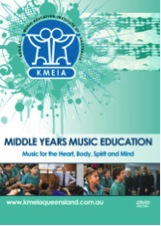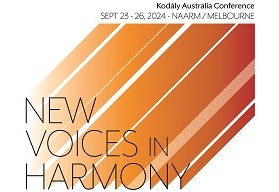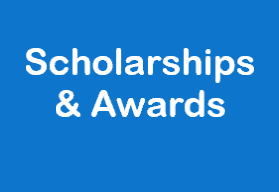Article By Yvonne Tysoe based on a workshop by Maree Hennessy
Middle Years are a time of exponential growth and change—physically, socially, intellectually and emotionally. It is an important stage where the forming of positive relationships, high self-esteem, self-efficacy and identity is crucial and significant. These factors have profound effects on educational experiences for adolescent learners and conversely their educational experience have profound impacts on student well being and growth.
The following information has been extracted and summarised from a Middle Years Workshop presented in South Australia by Maree Hennessy. Notes taken at the workshop by Yvonne Tysoe.
Some tips for teaching middle years students
Create lessons that:
- Use a central organising idea to engage and motivate learners
- Involve students in choice of topics of interest to support the growing need for independence
- Use essential questions to frame the unit. Involve problem-based inquiry to create a context for meaningful learning. Develop the processes required for critical thinking which strengthen connections in the brain
- Include reflection and reflective writing to consolidate learning and seek meaning between various activities
- Use peer collaboration and group learning
- Use sensory motor attributes such as music, touch and emotion to maximise student concentration and memory
- Provide opportunities for movement and exercise to alleviate discomfort experienced by bone growth
Possible Themes for Middle School Music
Songs of and for Australians:
- Earth, Sea and sky An exploration of indigenous music and culture (Land of the Silver Birch, My paddle)
- Indigenous Australian Music Taba Naba, Inanay, Sesere Eeye,
- Songs of social justice including negro spirituals, Poor Old Howard
- Songs of Spirit, Songs for Change The use of music including popular music to effect social, political and environmental change: “Where There is no Vision”
- Australian History in Song (Bound for South Australia, John Kanaka)
- Significant Australians: Composers and Musicians” (ties in with Year 6 History unit)
Planning Music Lessons
Maree says that classroom music lessons need to be made up or a broad variety of activities. For each activity teachers make a connection to previous learning and plan for a small step forward in students’ learning. These small steps need to be balanced between consolidating learning and providing new challenges.
A lesson needs to have a range of activities based on a variety of songs towards a number of goals. The pace of the lesson is crucial in holding students interest. Consequently lessons are made up of small ‘bites’ based around different repertoire to advance music concepts and skills in small incremental steps. Teaching this way allows repertoire and concepts to be revisited more often. This is particularly important where music lessons are held only once a week.
Resist the temptation to get carried away with successful learning in one area and introduce new concepts too soon. The aim is to build capacity and security over time across all aspects of music.
Activities in a music lesson might include a learning experience to advance knowledge of the following:
- Melody
- Rhythm
- Metre
- Style
- Part-work / Harmony
- Form / Structure
- Writing
- Creating
- Repertoire
Repertoire
When choosing repertoire look to include:
- Songs with intellectual rigor
- Songs which appeal to students’ growing sense of identity and push against authority
- Songs which appeal to their sense of justice
- Songs in a Minor key and those with interesting rhythms have great appeal to this age group
- Songs which lend themselves to movement and exercise
- Songs which can be connected meaningfully to previous learning and an overall topic
Other important inclusions in middle school music
Making Connections: Make learning meaningful by making connections. These may include explaining historical or cultural backgrounds . They may be connected to something they already know by style, genre, melodically or rhythmically.
Metacognition: Talking about the difficulties in learning develops the resilience to keep trying. They accept the need to practice and develop the capacity to accept new challenges.
Scaffolding: scaffolding tasks at different levels of achievement (similar to computer games) allows everyone to achieve something. Scaffolding caters for individual differences and is a useful tool for assessment. Used in homework it allows students to set their own challenges.
Catering for different learning styles: Include a wide variety of activities within a lesson. These may include movement, singing, listening, reading, writing, creating, thinking. Students may be working as an individual, a class or group work (which particularly appeals to middle school learners)
Reflection: May occur at any stage during a lesson and can be used as a tool to keep students attention. It can be oral or in written form. Reflection may be also used as an opportunity for students to ask questions and clarify learning.
Example Repertoire Work
 “Where There is No Vision”
“Where There is No Vision”
Origin: Words and Music by Fay White
Source: Songbook “Victoria Sings SHORT STUFF”
NOTE: The following activities would be gradually introduced over a series of lessons
Teaching the song (year 9): Maree began by teaching the song. Without any preamble, she pointed to herself to sing and then pointed to the class to echo her, starting one phrase at a time, then extending it to two phrases and then finally the whole song.
Part Work: Class sings the song as a four-part round.
Aural Analysis: Maree sang the song pausing on the main tones to help the class find the ‘anchors’ in the music. (la mi so la’ ). Maree discussed the song’s use of the minor scale: Natural Minor (Aeolian Mode)
Rhythmic Analysis: This song contains the rhythmic element syn-co-pa
Part Work: Use this rhythm as an ostinato to clap as you sing the song:
Ostinato 1: 
Extend to clapping the ostinato in two groups while singing.
Extend further by changing the position of the syn-co-pa in the bar.
Metacognition (Thinking about learning): Discuss why this the singing was less when we clapped the second rhythm in two parts. The reason was that it required more concentration and the most people wouldn’t be able to do it without practice. Talking about difficulties in learning builds resilience and encourages students to keep trying rather than give up because they couldn’t do it first time. Ask students to help order tasks in degrees of difficulty.
Scaffolding: Maree suggests setting homework in levels of achievement. This enables students to build capacity and security in their learning over time. For example
Level 1: With a partner sing the song while clapping ostinato 1
Level 2: With a partner sing the song while clapping ostinato 2
Level 3: With a partner, sing the song with one person clapping ostinato 1 and the other ostinato 2
Level 4: Sing the song by yourself. RH taps ostinato 1 and LH claps ostinato 2
“Poor Old Howard”

 Origin: Traditional American (Roud Folk Song Index 7498)
Origin: Traditional American (Roud Folk Song Index 7498)
Source: Music For the Middle School Resource “Music for heart, body, spirit and mind” DVD and classroom resources
Creating Music – Improvisation
Maree uses this song (which is in la pentatonic) as a basis for ‘safe’ improvisation. It is safe because within a pentatonic scale, no combination of notes sound discordant so it’s impossible to make mistakes. In assessing, Maree focuses on students’ thinking rather than the instrument they use to improvise. With learning preceding these activities.
NOTE: The following activities would be gradually introduced over a series of lessons
- Sing the song while clapping the beat, clapping the rhythm
- As you sing the song, create a 4-beat rhythmic pattern to clap as an ostinato
- Individuals perform their rhythm while everyone sings. This provides an opportunity for differentiating between students e.g.
- Students write their rhythm. This could be using the sets of cards or with stick notation
- Students choose instruments to play using un-tuned instruments
- Revise the la pentatonic scale.
- Students with tuned instruments improvise a melody to fit their rhythm within the la pentatonic scale.
- Students change instruments.
- Students write their improvised melody on the staff
- Students transpose their melody to la = E




